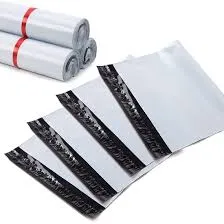cellophane wrap biodegradable
The Biodegradability of Cellophane Wrap A Sustainable Alternative
In an era marked by increasing environmental consciousness, the quest for sustainable packaging solutions has become more critical than ever. Traditional plastic wraps, often made from petroleum-based resources, contribute significantly to plastic pollution. In contrast, cellophane wrap emerges as a biodegradable alternative, bridging the gap between functionality and environmental responsibility.
Understanding Cellophane Wrap
Cellophane is a thin, transparent film made from regenerated cellulose. It was first developed in the early 20th century, and its unique properties quickly made it a popular choice in various industries, particularly in food packaging. Unlike conventional plastic wraps made from low-density polyethylene (LDPE), cellophane is derived from natural materials, specifically wood pulp, and is processed through a series of chemical treatments. This process allows it to retain its attractive qualities while being more environmentally friendly.
Biodegradability of Cellophane
The key feature that sets cellophane apart from plastic wraps is its biodegradability. When disposed of in a suitable environment, cellophane can break down into its natural components over time, unlike plastic which can persist in the environment for hundreds of years. Studies suggest that cellophane can decompose within a few months to a couple of years, depending on conditions such as soil composition, moisture, and temperature.
This biodegradation process is primarily facilitated by microorganisms that break down the cellulose into carbon dioxide, water, and biomass. As a result, cellophane wrap does not contribute to long-term environmental pollution, making it a much more sustainable option for consumers who are mindful of their ecological footprint.
Versatility and Uses in Packaging
cellophane wrap biodegradable

Cellophane's versatility makes it a valuable packaging material in various applications. It is commonly used for wrapping food products, particularly candies and baked goods, due to its moisture barrier properties, which help maintain freshness. Additionally, its clarity allows consumers to see the product inside, enhancing its visual appeal. Furthermore, cellophane is also biodegradable, making it suitable for wrapping gifts, flowers, and other items, adding a touch of elegance to the packaging.
In the context of the food industry, cellophane wrap is advantageous not only because of its biodegradable nature but also due to its ability to allow gases to pass through. This property is particularly beneficial for packaging fresh produce, as it helps regulate humidity and prolong shelf life without creating a suffocating environment.
Challenges and Considerations
While cellophane offers considerable advantages, it is essential to recognize that it is not without its challenges. The production of cellophane involves the use of chemicals, which can have environmental impacts if not managed correctly. Additionally, while cellophane is biodegradable, it needs the right conditions to decompose effectively. Some consumers may mistakenly dispose of it in landfills, where the lack of oxygen can slow decomposition significantly.
Moreover, the cost of cellophane can be higher than that of traditional plastic wraps, which may deter some businesses and consumers from making the switch. However, the long-term benefits of using biodegradable materials often outweigh the initial investment, particularly for companies aiming to enhance their sustainability image.
Conclusion A Step Towards Sustainability
As society becomes increasingly aware of the detrimental effects of plastic waste, the shift towards biodegradable materials like cellophane wrap is a promising development. By choosing cellophane over conventional plastic wraps, consumers and businesses can actively participate in reducing plastic pollution and fostering a more sustainable future.
Ultimately, the use of cellophane wrap is a step in the right direction, demonstrating that it is possible to balance the need for convenience in packaging with the responsibility of protecting our environment. By making informed choices about the materials we use, we can contribute to a healthier planet for future generations.
-
The Best Uses for Small Trash Bags in Daily LifeNewsJul.01,2025
-
Stylish Reusable Grocery Bags TrendsNewsJul.01,2025
-
Shipping Advantages of Using Bubble Envelopes BulkNewsJul.01,2025
-
How Compostable Mailing Bags Reduce Environmental ImpactNewsJul.01,2025
-
Environmentally - Friendly Bulk Poly MailersNewsJul.01,2025
-
Eco Friendly Custom Laminated Tote BagsNewsJul.01,2025
-
Have the freedom of customizing your custom mailers any way you want! Our dedicated packaging support will help deliver you the mailing experience you need to elevate your shipping experience to the next level! Start making a strong impression on your customers and stand out from your competitors! -
LIYA uses high quality raw materials which directly purchased from large enterprises domestic and overseas such as PetroChina, Sinopec, Sabic, Equate, ExxonMobil, Dow Chemical, Total, and Borouge, ensuring the price advantage and quality of the raw materials. -
LIYA uses high quality raw materials which directly purchased from large enterprises domestic and overseas such as PetroChina, Sinopec, Sabic, Equate, ExxonMobil, Dow Chemical, Total, and Borouge, ensuring the price advantage and quality of the raw materials.





